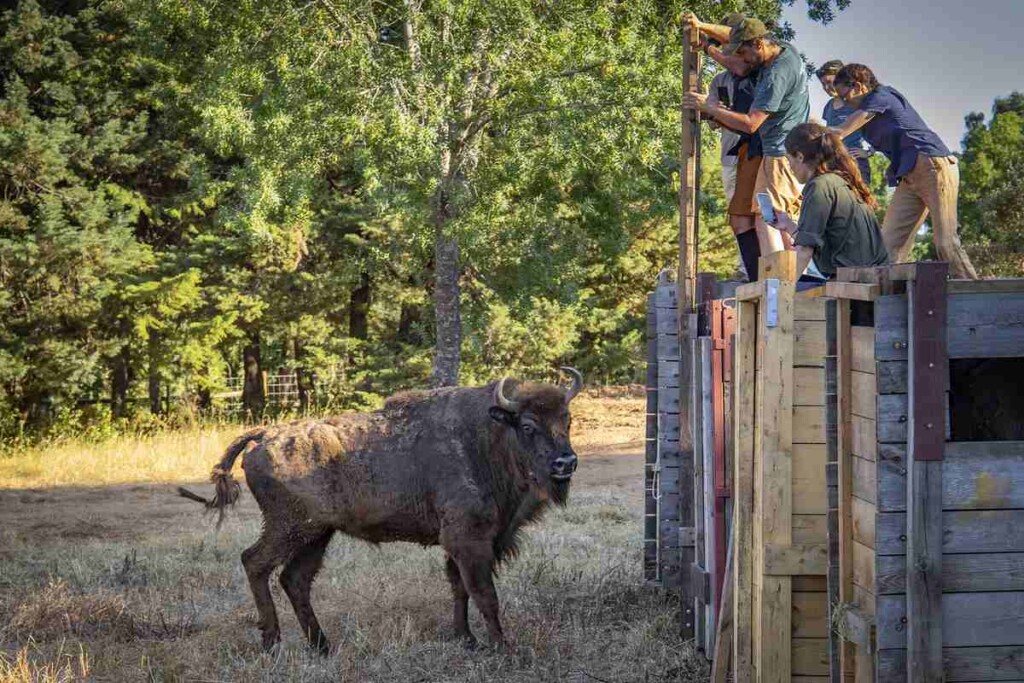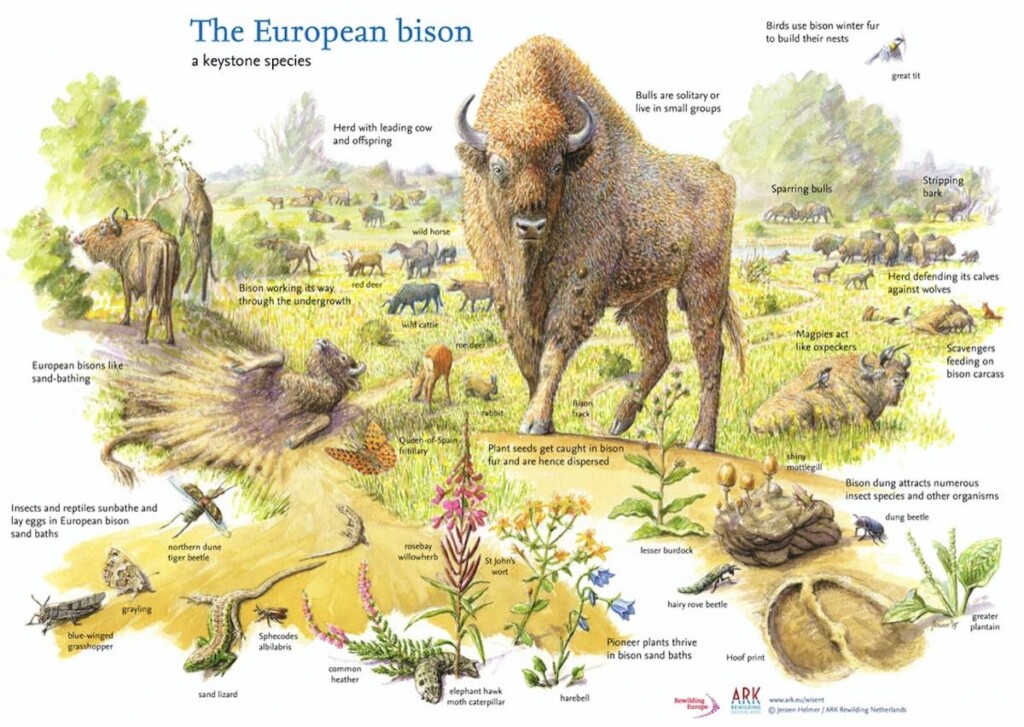 credit – Rewilding Europe, Nelleke de Weerd, released.
credit – Rewilding Europe, Nelleke de Weerd, released.Rewilding Europe is thrilled to announce the arrival of a small herd of bison in a large valley in Portugal.
Believed to be the key to preventing catastrophic wildfires, invasive species spread, and promoting endemic biodiversity, it's the first time bison have been present in Portugal since the last Glacial Maximum.
From Poland to Romania to the UK, European wood bison are now firmly recognized as one of the best tools for returning what little wilderness Europe has left to as wild a state as possible.
Once upon a time, all of Europe was covered in forests or scrubland, through which roamed the European bison and the steppe bison. Today, nations across the Old World are trying to reintroduce these large grazers into wild areas to help improve native ecosystems.
In Portugal, a country smaller than Pennsylvania, the gradual abandonment of the Greater Côa Valley has presented an unprecedented opportunity for rewilding in the small country.
The government has already set aside a quarter million acres of land for conservation, boasting an interesting mix of natural and semi-natural habitats of scrub, Mediterranean dry forests, and steep gorges.
The Iberian wolf is present on the land in the form of a small pack, and the area acts as a refuge for roe and red deer, wild boar, eagles, and an ancient cattle breed that's left to roam wild as its ancestor, the mighty auroch, once did across Europe.
 European Bison keystone species – ARK Rewilding Netherlands
European Bison keystone species – ARK Rewilding NetherlandsThe arriving European bison will be managed in cooperation with the Rewilding Portugal team, who received the individuals from the forests of northern Poland, where over 4,000 bison roam wild.
MORE STORIES LIKE THIS: Wild Bison Return to UK After Thousands of Years – And Are Ready to Tear S*!# Up
“We are viewing this translocation as a pilot,” explains Rewilding Portugal team leader Pedro Prata. “The bison will be closely monitored to see how they acclimatize to the local landscape and climate. This is the first time that Rewilding Portugal team has managed bison, so it’s a learning process for us too. Members of the team will receive training in bison management.”
It won't just be new for the team, but new for Portugal in a way. Remains of the European bison have not only never been discovered in the country, but never been discovered on the whole of the Iberian Peninsula.
The scientific evidence has to look back 10,000 years ago to find bison in Portugal—the steppe bison—a predecessor of the modern European bison. However, studies of translocated bison in Spain have shown that they are at home in the hot, dry climate.
LOOK: Absolutely Epic: Watch the Release of a Wild Bison Herd onto Blackfeet Tribal Land
Through their grazing, foraging, trampling, and fertilizing, bison help to maintain biodiversity-rich mosaic landscapes of forest, scrub, and grassland, as well as numerous micro-habitats, which host a wide range of plant and animal species.
This has been highlighted by studies in Europe, as well as in North America with regard to the related American bison. These same interactions can boost the capture of atmospheric carbon in both vegetation and the soil.
SHARE This Amazing Work Restoring A Wild-Like Portuguese Landscape…
Source link

